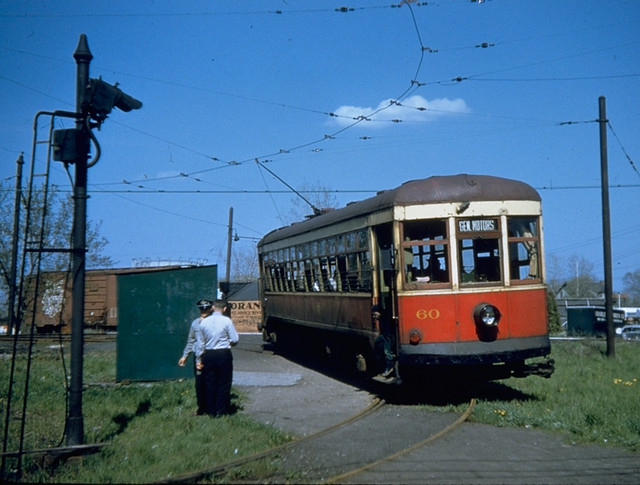Celebrating 80 Years of Preserving Rochester’s Rich Railroading Heritage!
Our organization can trace its roots back to February 4, 1937, when a small group of rail enthusiasts met on the second floor of the old New York Central station on Central Avenue to celebrate their membership as the newly formed sixth chapter of the National Railway Historical Society. That first meeting consisted of ten pioneering members representing, as we do today, all ages and walks of life. John Abbott was a baggage handler, Peter Barry worked at electrical distribution (and would later become Rochester’s 59th mayor), William Buckland was a banker at Genesee Valley Trust, Charles Brunell was a clerk at Lincoln Alliance Bank, Charles Hess was a retired tobacconist, Ward Schafer was a ticket agent, Gegorge Slyferd was a printer, Karl Sweeney was a bookeeper, Bernard Ward was a teacher (and our group’s first president), and John Woodbury was a clerk at Stromberg-Carlson Corp.
We owe much to those ten original members. John Woodbury’s immense collection of railroad photos and literature are the heart of our museum’s library archive. Charles Hess and William Buckland provided important early financial support. Ward Schafer’s enthusiasm kept the organization strong and moving forward. Bernard Ward’s leadership and good humor maintained the group’s spirit while Peter Barry’s winning personality helped attract new members.
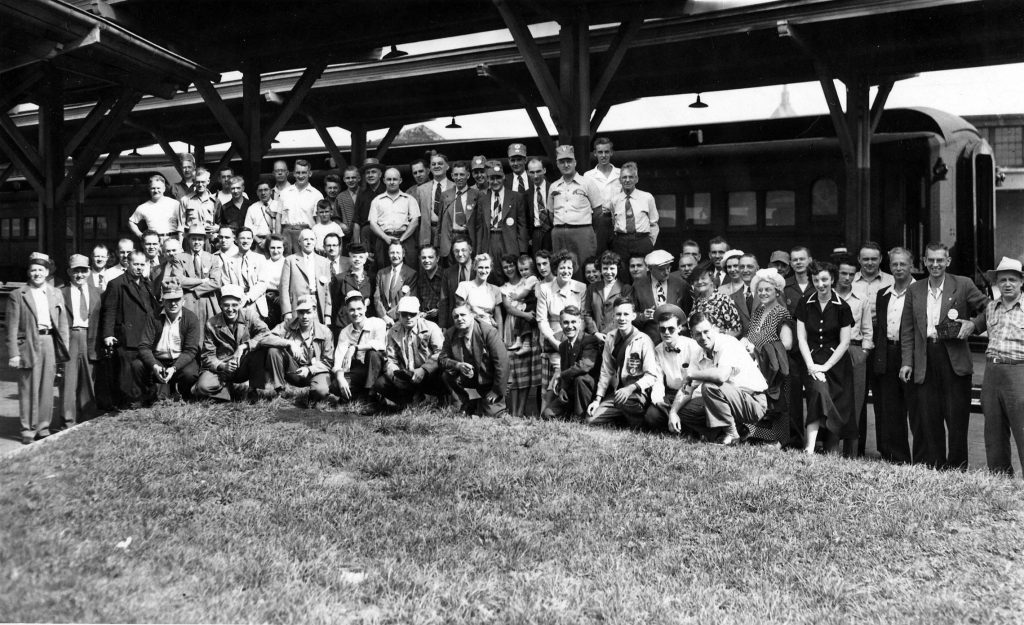
Attendees of the 9th Annual NRHS National Convention pose at the Baltimore & Ohio station on Main Street on September 3, 1949.
Just 12 years later, the Rochester Chapter had grown in size and recognition. Rochester was chosen as the site of the 9th Annual NRHS National Convention. Over the long weekend of September 3 through 4, 1949, NRHS members from all over the country convened at the Hotel Rochester for their annual meeting, grand banquet, and rail excursions. For this significant occasion, our members proudly displayed their collections of railroad memorabilia in the hotel lobby. Large display cases were filled with exhibits of railroad lanterns, detailed models, photographs, and all types of associated railroad books and literature.
Member George Remington was the emcee for the convention’s annual banquet. Besides being trust officer for the Lincoln-Rochester Bank, he was also the president of the Rochester & Genesee Valley Railroad (which was on perpetual lease to the Erie Railroad as their Rochester-Corning route). On September 3, 1949, an eager crowd of railfans gathered under the sheds of the Baltimore & Ohio (former Buffalo, Rochester & Pittsburgh Ry.) terminal off West Main Street for an excursion to East Salamanca, N.Y., and return. Among the attendees were long-time members Bill Gordon, Dick Tickner, Bill Chapin, Sam Grover, Ed Van Leer, and Curt Boyer. On September 5, more than 65 attendees boarded two chartered trolleys at City Hall Station for a complete end-to-end tour of the Rochester Subway. The convention was declared a complete success by all reports.
After suffering through a period of postwar decline, the venerable Rochester Subway remained the last vestige of trolley operations in our city. Operated by Rochester Transit Corp. since 1938, the Subway was constructed and owned by the city. When the city council voted to end all passenger service on June 30, 1956, thousands turned out for one last ride on the system that stretched from Rowlands Loop in Brighton to General Motors in Greece. One car from the fleet of 12 serving the Subway was selected for preservation, following a campaign of letter-writing between our group and RTC. Rochester Subway Car 60 became the first piece of railroad equipment preserved in our collection. Having no permanent facility of our own, arrangements were made to have Car 60 displayed at the new Rail City Museum in Sandy Creek, N.Y.
Through the 1950s, several excursions were operated on the B&O and Erie lines during the waning days of steam locomotives in cooperation with the nearby Buffalo Chapter NRHS. One of these trips on the B&O was documented in the short documentary film The Vanishing American produced by the Kodak Camera Club, with the original print in our museum collection.
By the 1960s, our headquarters moved to a location on South Avenue (now occupied by the Convention Center), as the old NYC station had been sold to new owners. Members of our organization became involved in the operation of steam excursions on the new Livonia, Avon & Lakeville Railroad that started up on the old Erie line in 1965. Regular steam excursions on the Canadian National just across the border in Fort Erie and Hamilton, Ont., were also a big draw.
The search for a permanent location to establish a railroad museum began in the mid-1960s. Several locations were considered, including the former B&O station in Mumford.
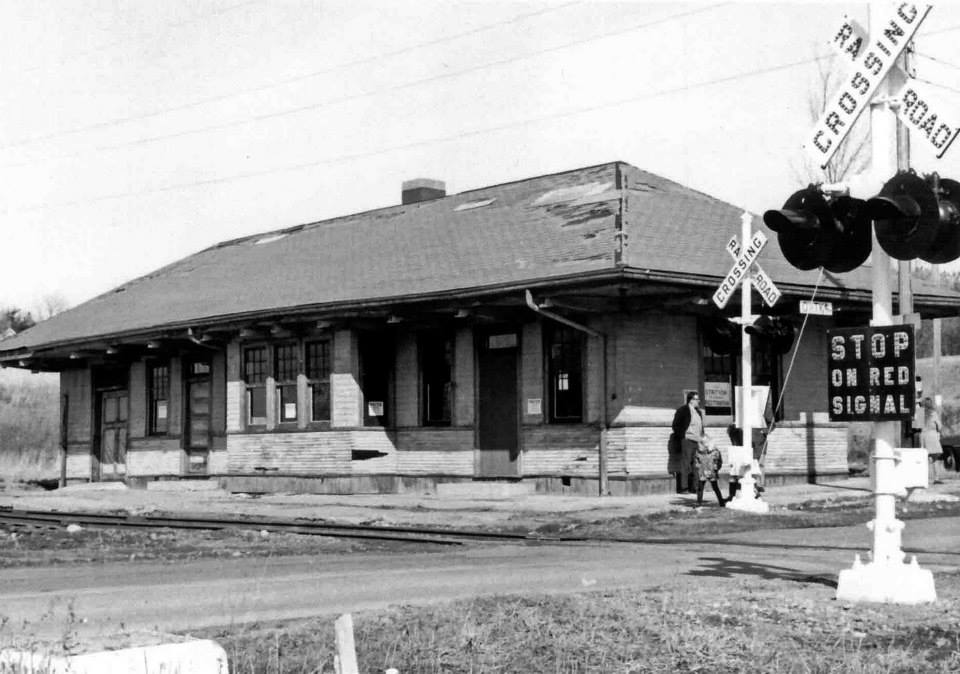
A pivotal point in our organization’s history was the purchase of the 1909 wood frame depot at Industry from the Erie Lackawanna Railroad for $1.00 in July 1971. The first official work session was attended by nine hearty souls on January 2, 1972. The herculean task of renovating the old depot would take several years to complete, including excavating furnace ashes and mud from the basement, replacing the main floor beam, and repairing the roof. With the increased activity down-county, our members established a gift shop and store in the depot at Livonia, N.Y., that was open on days the Livonia, Avon & Lakeville Railroad operated their popular steam excursions. Proceeds from the store helped support the restoration of our Industry Depot, which we then called “Oatka.” Members Gerald (Jerry) Hott, Henry (Hank) Pape, Ed Maslyn, Greg Sullivan, Bill Gordon, Peter Gores, Dick Barrett, Cal and Rose Bulman, Devan Lawton, and Rand Warner were instrumental in leading those early efforts.
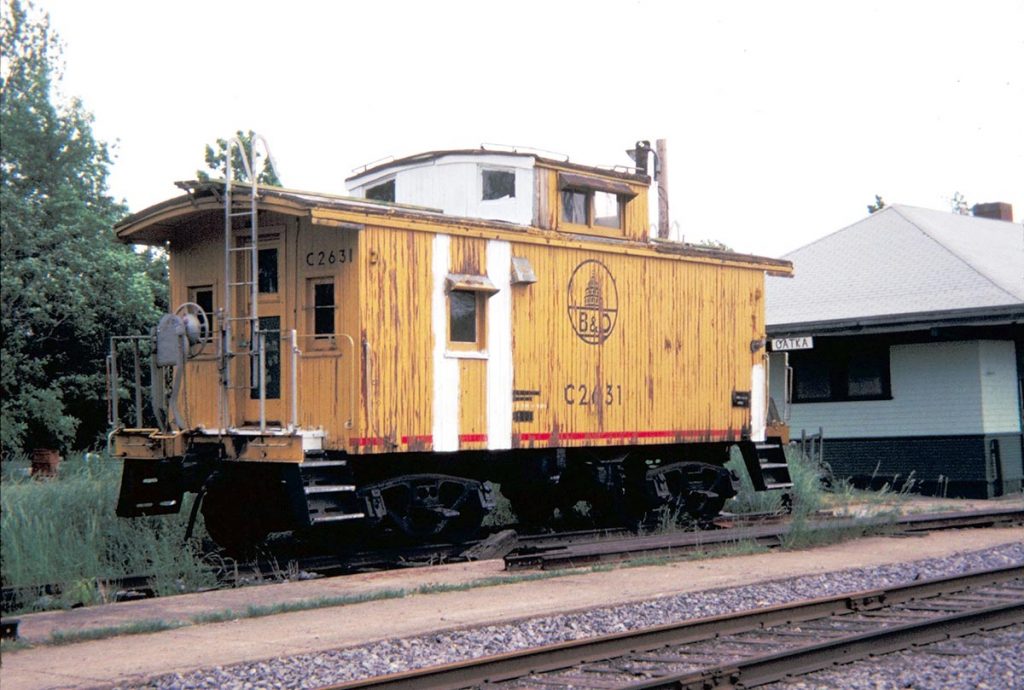
Former Baltimore & Ohio baggage car No. 633 joined our collection in 1972, followed by an ancient 40-foot former New York Central flatcar in 1974. Both items were stored on LA&L property since we had no live rail connection to bring cars onto our museum property. On April 1, 1976, operation of the tracks than run past our depot changed from Erie Lackawanna to Conrail. In 1979, Chessie System donated former B&O caboose C2631 (former BR&P 280) to our museum for preservation. This was the first piece of rail equipment displayed at Industry, slid onto a piece of panel track built next to the station.
As our collection of historic railroad equipment continued to grow, it became clear we would need to restore a connection that would allow our museum to have a live rail connection to the outside world. With the permission of Conrail, several dozen volunteers worked through the weekend of August 7 though 9, 1981, to reinstall a switch that would connect to the display tracks being built on our property. This work was completed none too soon, as Eastman Kodak Co. had just donated a retired diesel locomotive to our museum. On August 15, GE 80-ton switcher EK 6 arrived at Industry, having traveled on live rail all the way from the Kodak plant. Kodak’s first diesel (built new in 1946) in turn became our museum’s first locomotive.
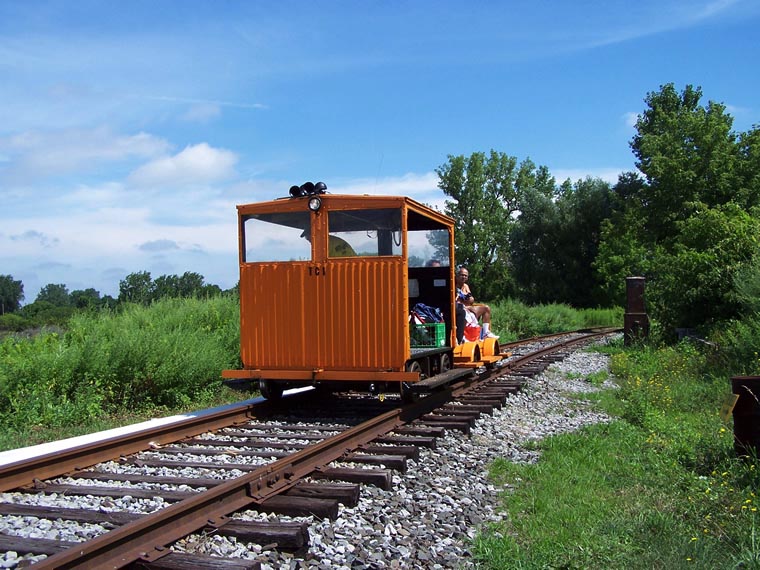
Additional track construction continued off and on for another ten years, including the expansion of the display yard at Industry Depot. On June 12, 1993, museum members celebrated with a “golden spike” ceremony celebrating the completion of a two-mile link with the New York Museum of Transportation. Public track car rides between the two museums began shortly thereafter, bringing a steady stream of Sunday visitors to both locations.
A group of members formed Empire State Railcar to purchase six retired former New York Central Budd streamlined coaches from an equipment broker in 1993. These coaches were built in 1941 for the Empire State Express before they were downgraded in the 1960s and rebuilt for commuter service. The cars were delivered to Sodus, N.Y., where a series of successful fall foliage excursions were operated on the Ontario Midland Railroad. These trips provided a significant source of income for our museum for many seasons.
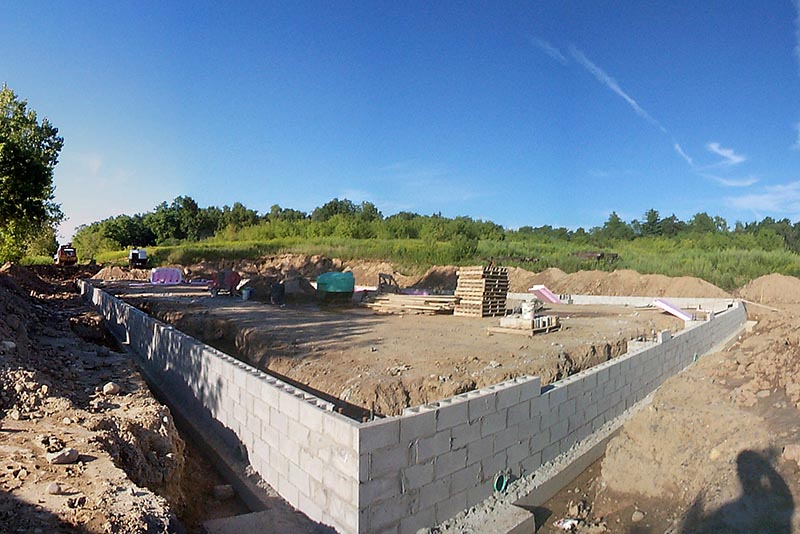
As we celebrated the 25th anniversary of the establishment of our museum at Industry in 1996, a major fundraising campaign was announced to fund the construction of a new restoration shop. Ground was broken on the new facility in 1998. By 2000, the structure was completed and electrical service connected. Tracks were laid into the structure, and some of the first pieces were placed inside the shop, including the newly-returned Rochester Subway Car 60.
Six vintage diesel-electric locomotives now called the Rochester & Genesee Valley Railroad Museum home, soon to be joined by two more diesel switchers from Rochester Gas & Electric in 2007. The restoration of Erie caboose C254 was completed in 1994. A number of freight cars and cabooses joined the collection in the 1990s as well.
Our annual fall foliage excursions came to an end in 2004 and the coaches were placed in storage on the Ontario Midland at Newark, N.Y. In December 2007, our set of Empire State Express coaches were delivered from Sodus to Industry, and spotted in the newly built Upper Yard leading into the Restoration Shop. In 2012, we moved the coaches to our newly completed siding on the west side of the LA&L tracks that run past our museum. Volunteers prepared the coaches for their first trip, a special end-to-end rare mileage excursion on the LA&L from Lakeville to Mortimer and return. Since then, our museum has operated an annual fall foliage excursion each October, thanks to the cooperation of the LA&L. By the end of 2010, our museum chose a path independent of membership in the NRHS.
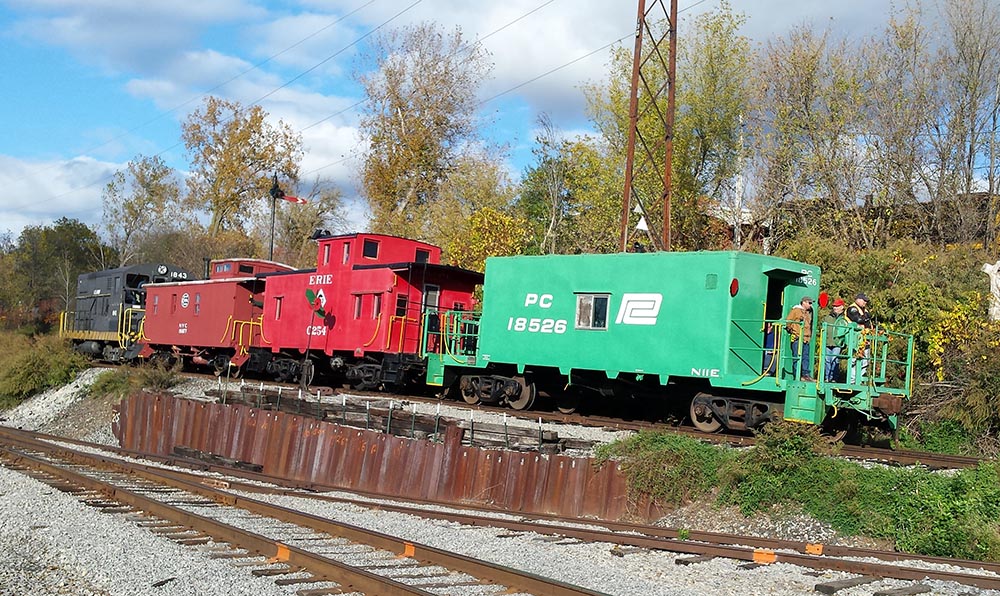
In 2015, we expanded our museum campus by opening the Upper Yard to the public for the first time. Expanded parking facilities were created, and many new museum displays were installed. Our New York Central caboose was returned to service to carry the dramatic increase in visitors. Many years in the making, a major project to complete our concrete inspection pit inside the Restoration Shop was completed in 2015. More than two-thirds of the new concrete floor inside the shop was completed in 2016, opening up additional space for projects and visitors alike. At the end of 2016, the LA&L RS-1 No. 20 was donated to our museum by the railroad.
The Rochester & Genesee Valley Railroad Museum is home to the largest collection of historic trains, as well as the only operating railroad museum in New York State. With this distinction comes its own challenges for our volunteers to meet as we continue to expand and grow. Won’t you join us?
—Compiled by Donovan Schilling and Otto M. Vondrak
